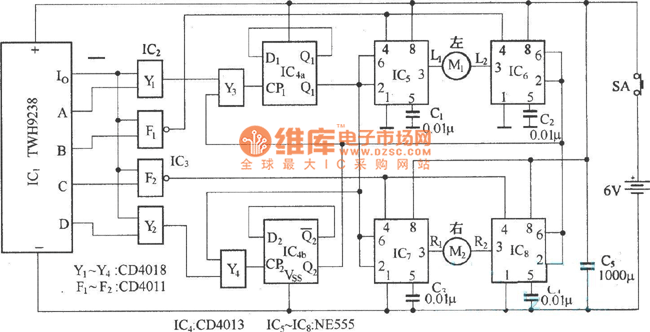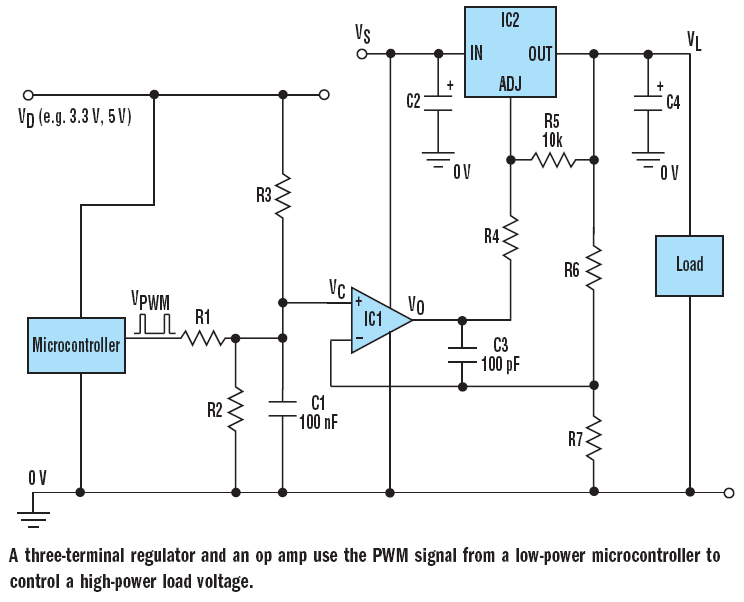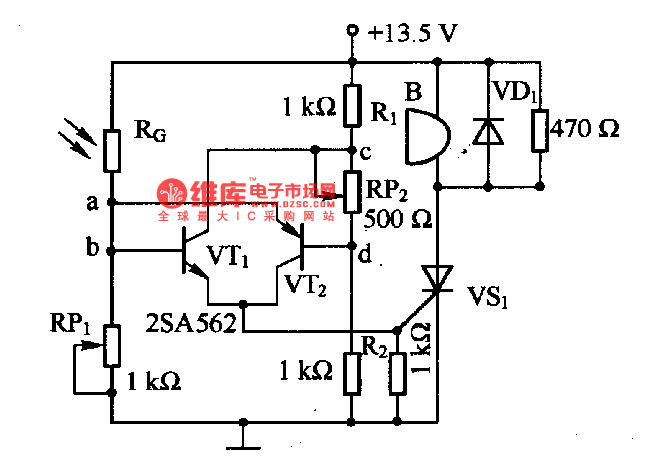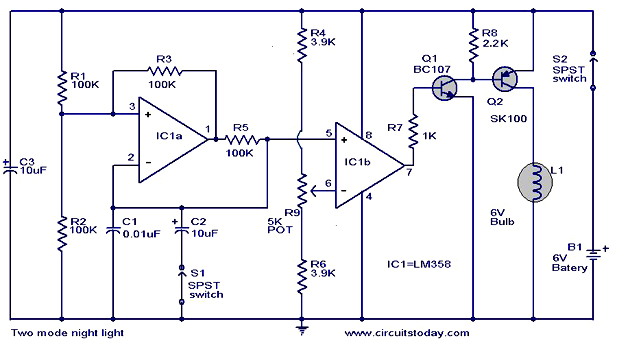
Mosquito-repelling circuit

In the 555 oscillator circuit, adjusting R2 will provide output frequencies ranging from below 200 Hz to above 62 kHz. It is recommended to use a good quality miniature speaker to produce frequencies around 20 kHz.
The 555 oscillator circuit operates in astable mode, generating a continuous square wave output. The frequency of oscillation is primarily determined by two resistors (R1 and R2) and a capacitor (C1). The formula for calculating the frequency (f) of the output waveform is given by:
f = 1.44 / ((R1 + 2R2) * C1)
By varying the resistance of R2, the duty cycle and frequency of the output signal can be adjusted. Lowering R2 increases the frequency, while increasing R2 decreases the frequency. This flexibility allows for a wide range of output frequencies, making the 555 timer a versatile component in various applications.
For optimal performance, especially at higher frequencies around 20 kHz, it is advisable to select a high-quality miniature speaker with a suitable frequency response. The speaker should be capable of accurately reproducing the desired frequencies without distortion. Additionally, the power rating of the speaker should match the output capabilities of the 555 circuit to avoid damage to the speaker or the circuit itself.
In practical applications, the circuit can be powered by a DC voltage source, typically ranging from 5V to 15V, depending on the specifications of the 555 timer used. Proper decoupling capacitors should be employed near the power supply pins of the IC to minimize noise and ensure stable operation. The output can be connected directly to the miniature speaker, or through a transistor amplifier stage for increased power handling, depending on the requirements of the application.In the 555 oscillator circuit, adjusting R2 will provide output frequencies from below 200 Hz to above 62 kHz Use a good quality miniature speaker so that it will produce frequencies on the order of 20 kHz.
The 555 oscillator circuit operates in astable mode, generating a continuous square wave output. The frequency of oscillation is primarily determined by two resistors (R1 and R2) and a capacitor (C1). The formula for calculating the frequency (f) of the output waveform is given by:
f = 1.44 / ((R1 + 2R2) * C1)
By varying the resistance of R2, the duty cycle and frequency of the output signal can be adjusted. Lowering R2 increases the frequency, while increasing R2 decreases the frequency. This flexibility allows for a wide range of output frequencies, making the 555 timer a versatile component in various applications.
For optimal performance, especially at higher frequencies around 20 kHz, it is advisable to select a high-quality miniature speaker with a suitable frequency response. The speaker should be capable of accurately reproducing the desired frequencies without distortion. Additionally, the power rating of the speaker should match the output capabilities of the 555 circuit to avoid damage to the speaker or the circuit itself.
In practical applications, the circuit can be powered by a DC voltage source, typically ranging from 5V to 15V, depending on the specifications of the 555 timer used. Proper decoupling capacitors should be employed near the power supply pins of the IC to minimize noise and ensure stable operation. The output can be connected directly to the miniature speaker, or through a transistor amplifier stage for increased power handling, depending on the requirements of the application.In the 555 oscillator circuit, adjusting R2 will provide output frequencies from below 200 Hz to above 62 kHz Use a good quality miniature speaker so that it will produce frequencies on the order of 20 kHz.





